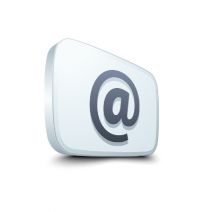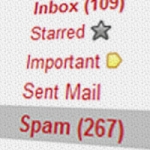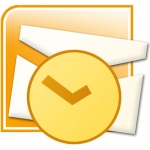Can you tell the difference between your colleagues and a scammer with access to their email account? This is essentially what a business email compromise attack involves—a scammer initiates a phishing scheme using an internal mode of communication. These scams are also observed in schools, making them dangerous in the education sector.
Directive Blogs
 Let’s say you get an email from a close friend. It looks like it’s legitimate, until you check the contents of the message. It’s an advertisement, or it’s trying to get you to click on a link to see something “important.” Regardless of what the content of the message is, you should probably slap that bad boy in the Spam section of your email inbox. You’ve just been the target of email spoofing, and it’s more common than you might think.
Let’s say you get an email from a close friend. It looks like it’s legitimate, until you check the contents of the message. It’s an advertisement, or it’s trying to get you to click on a link to see something “important.” Regardless of what the content of the message is, you should probably slap that bad boy in the Spam section of your email inbox. You’ve just been the target of email spoofing, and it’s more common than you might think.
If you are a Gmail user, you might have noticed the different inbox categories available. This makes it much easier to reach “inbox zero.” With the “priority inbox,” you can achieve this feat without so much as breaking a sweat—unless you count sweat from how much you’re laughing at how easy this tip is to pull off.
Do you have trouble keeping up with your email inbox? You’re not alone; business professionals all over the world struggle to get to the fabled “inbox zero.” If you want to change the way you manage your inbox for the better, you should consider the RAD method. It might just change your life.
The proposed ideas here come from Nick Sonnenberg, founder and CEO of Leverage.
All it takes is one oversight to potentially undo any benefits your cybersecurity protections and other best practices may deliver. For instance, even if you have things like multifactor authentication in place, a phishing scam or even some malware varieties could potentially give an attacker access to your email… and all the data your messages contain, just sitting in your inbox.
We often advise people to steer clear of clicking on suspicious links, but distinguishing between a legitimate URL and a dubious one has become increasingly challenging. Not only have malicious tactics evolved to the point where everyone has to stay on top of their game to not be fooled, these threats are almost pervasive so they are coming at people from all types of directions. We thought we would focus on a single punctuation mark that can make all the difference in whether a link is legitimately safe or potentially dangerous.
There are few technology solutions that have been as transformative and important for businesses as email. Unfortunately, however, it’s remarkably easy for a hacker to gain access to an email account to cause all kinds of chaos for a business. Let’s consider ways you can protect your business’ email accounts and, by extension, the rest of your organization’s infrastructure.
Amazon Prime subscribers recently received an email from the online marketplace, warning them of the prevalence of scams that took advantage of their offerings and brand recognition. Let’s go through the advice that this email shared, and compare it to the best practices we recommend for avoiding scams.
In business, good communication is essential. If you do it right, you can streamline actions that can save your business a lot of money and build incredible efficiencies that can bring your vision to reality. Poor communication, on the other hand, can hinder a business’ ability to prosper. In order for your staff to be able to communicate effectively, they need the tools to do so. Here are three tools that most businesses should have in place to help drive business forward.
A business’ operations are heavily influenced by the quality of its communications. However, the overwhelming number of options that are available today can make it challenging to decide how to invest in your technologies. Let’s talk about how you can identify which of your options are right for your business needs, and when the time comes to upgrade your communications.
AI—artificial intelligence—has been a hot topic as of late, with it seemingly being used for any purpose you can imagine nowadays. Unfortunately, this has also included cybercrime.
However, just as AI can be a weapon for cybercriminals to use, it can also be a shield to help protect your business from threats. For instance, in phishing prevention.
Email groups are remarkably useful. Instead of sending a copy of an email to each individual recipient, you can effectively create a simple forum post that everyone can participate in—a feature that certainly helps when collaboration is a priority. Let’s go over how you can quickly and easily create a group in Gmail.
Email remains a cornerstone in business communications, often containing sensitive information and other data that really needs to be protected. Fortunately, modern email platforms often enable you to add a little bit of protection, so long as you know what the process looks like.
Let’s go over how you can make your emails just that much more secure.
Phishing has become one of the great problems for technology users in the 21st century. The ironic part of the whole thing is that it has taken a good old-fashioned social engineering scam to make today’s robust information systems less secure. Phishing is the predominant way that hackers and scammers gain access to the systems they target. Today, we’re going to spell out what to train your employees on to help them identify phishing attacks.
I’m talking about when the heir to the Nigerian throne would reach out to your Hotmail account to help him secure his inheritance, or when an attractive woman or man you’ve never met before would email you out of the blue asking if you were single; spam has always been annoying, but back then, it was clearly just junk that could be ignored.
Today, it’s not so simple.
The holidays are fast approaching and that means people are going to miss work for one reason or another. If you can get away from the office for a little bit, you’ll want to set up an out-of-office message to ensure that others know you will get back to them when you get back to the office. Here’s how you can set up an autoresponder for an out-of-office message in Microsoft Outlook.
How often do you receive emails from someone written in another language? We bet the answer is “not often,” but you never know when being able to translate an email might come in handy—especially if you ever do business overseas. Let’s go over the built-in translation functionality that comes with Gmail.
Sometimes the worst scams out there are the simplest ones. Hackers don’t need a fancy or complicated malware or algorithm to create chaos for your organization; all they have to do is convince you that the email you’ve received in your inbox is from someone of authority within your business. Let’s go over how a business email compromise is pulled off and why you need to be wary of threats like these.
While we’re all for efficiency, there are some boundaries that should not be crossed for everyone’s benefit. Take, for instance, the email you use to subscribe to online services. While it may be tempting (or, for some people, automatic) to use your work email address when you sign up for, say, your Netflix account or an online merchant, we wanted to discuss why this is a bad habit to get into that could have lasting consequences.
Your company’s email is one of its most important pieces of technology, and since that is true for nearly every business, it is unfortunately one of the most utilized attack vectors used by cybercriminals. Most businesses don’t understand just how vulnerable they are if their email isn’t properly secured and do their best to keep their employees trained on how to spot potential scams.
The software you choose to use for your business largely defines the capabilities of it. When it comes to communications there are some very standard options that you probably already have and then there are some more innovative options that can have significant benefits for your staff. Let’s take a look at some of the standard communications options a business might use and how they can use technology to crank it up a bit.
Even the most cautious employee could fall victim to a well-placed and well-timed phishing email. What are some factors that contribute to the success of these attacks, and what subject lines in particular should people be cautious about? A recent study takes a look at what goes into a successful phishing attack, and you might be surprised by the results.
What do you do with your old email messages? Do they just sit around in your inbox and collect dust? If so, this is certainly a wasteful practice, as those emails can accrue over time and take up a sizable chunk of space. The question then becomes, what do you do with the emails to keep them from taking up so much space, especially when you might be paying for the space?
While spam filtering can be great for your business’ own defenses, the spam filtering that your contacts have in place could very well keep your messages from reaching them. This simply will not do. Let’s go over a few ways that you can help prevent your emails from being caught up in these filters before your contacts or prospects can read them.
What kinds of communication tools does your business utilize on a daily basis? Chances are that your communication infrastructure can benefit from some of the latest and greatest solutions on the market. Communication is one aspect of your business that you definitely do not want to skimp on, as failing to implement the proper tools can bleed into other aspects of your organization, including operations and, in return, your bottom line.
With so much time being spent in email, and Gmail holding a 33.7 percent market share, it should come as no surprise that many businesses wouldn’t mind it if a little less time were spent in Gmail if possible. As it happens, one of the most frustrating expenditures of your time—rewriting similar emails repeatedly—can be eliminated by creating Gmail templates.
Like any email platform, Microsoft Outlook can easily become overwhelmed with messages and conversations—effectively making it counterproductive rather than an asset to you and your team. Let’s take a few moments to go over a simple way that you can use Outlook’s internal tools to make your messages easier to deal with.
Gmail has proven to be as secure as most other email platforms, but email is email and there are times when you send an email that isn’t opened promptly and you’d rather not have the information in that message get sent around or archived where you can’t control it. Now Gmail has added a feature that allows users to send messages that will delete themselves in a predetermined time frame, and work to keep the contents of those messages from being shared. Let’s take a look at them today.
Gmail is as secure as any comparable email platform, but there may be some messages you send that you’d rather not have hanging around in someone’s inbox. However, did you know that Gmail enables you to send messages that delete themselves after a set timeframe… while also preventing the contents from being forwarded, downloaded, copied, or printed?
Email—it’s a business tool that we all use and rely on, but (if we’re being honest) it can be a pain to manage properly. Unfortunately, this can also depreciate the value of the solution to its users. To help prevent these problems, we wanted to share a few tips to assist you with your email management.
For the past several years, ransomware has been a major thorn in the sides of businesses. Hackers that were once known for “hacking” into networks, changed tactics when encryption just got too strong. Today, these “hackers” use confidence tactics to gain access to accounts. Once they’re in, their strongest tool is ransomware. Let’s look at what makes ransomware so dangerous and how your company can combat the constant attacks that come your way.
Every business should consider its security one of its top priorities, and with so much business now happening digitally, cybersecurity is a major part of that. Take, for instance, the heightened importance of email in the extended remote workforce. While email is a great business tool, it can also be an avenue that a cybercriminal uses to attack. So that you can better protect your business, we’re discussing some basic email security steps for this week’s tip.
While email is an indispensably useful tool in the office, it can quickly become a time-sink if finding the right messages to read and respond to becomes an overbearing responsibility. Fortunately, there is a simple solution to remedy this that, after spending some time learning about the full capabilities of your email platform, can once again make your email the useful tool it is meant to be.
As businesses have advanced, the use of tools to improve their communication has become paramount to success, with ongoing global developments only contributing further to their importance. With new challenges and opportunities presenting themselves each day, your team needs the tools that allow them to work together and accomplish all that needs to be done.
As if Oneonta residents didn’t have enough to worry about during the coronavirus crisis, there’s a new email cyberattack to keep on the lookout for. While it follows the similar pattern of using social engineering to trick its targets into providing funds, this time the attackers have reached a new low. Read on to learn how you can protect yourself.
If you were to search Google for “the most important thing for a company to be successful,” there appears to be a wide range of answers - from team management, to sales skills, to relationship building, to decision making. However, among the vast majority of the results, there was one common thread: the ability to communicate. That’s why we’re exploring how to best communicate with people associated with your business.
Email is one of the most valuable tools that a business has at its disposal, but even so, its true value can easily be wasted if it isn’t used to its fullest potential. To avoid this, we’ve put together a few of our favorite ways to streamline your business emails - and maybe fix a few bad habits along the way.
Email remains an incredibly useful tool in the business setting, assisting with a wide variety of communication needs. However, in order to make the most of your emails, you need to have an email client that permits you to do so. Here, we’re pitting two major email clients against each other to see which one offers the features that best suit your business and its needs.
Emails are a wonderfully useful solution, and quite possibly one of the most commonly used ones in the workplace today. However, not everyone is using every capability that their email solutions offer - and it has led to a lot of time being wasted in the workplace. For this week’s tip, we’ll review how to help cut back on the time spent organizing your emails.
Gmail and the applications associated with it seem to have some level of inherent trust among users. We just don’t anticipate threats to come in via something from Google. However, it does happen, as a recent spat of phishing has shown using Gmail and Google Calendar. What’s worse, this particular scam has been around for some time.
Phishing has quickly become the most predominant form of cyberattack due to the method’s simplicity. It solely relies on a user’s gullibility. The weakest link to any business is typically the employees. In order to protect your business, you and your team need to identify these social engineering cyberattack attempts. Let’s look at a few tips on how to recognize a phishing attempt.
Despite its whimsical name, phishing is a very serious threat to everyone, especially today’s businesses. This means that you need to be prepared to identify its warning signs and avoid risky situations. Here, we’re offering a few tips to help you do so - make sure you share them with your employees as well!
 One of the most unpleasant aspects regarding email is the anxiety associated with sending an important message. Did the message really send? Has the recipient read it yet? Should I contact them and ask if they got my email? The struggle is real. Thankfully, there’s a Chrome extension designed to alleviate this stress by answering these pressing questions.
One of the most unpleasant aspects regarding email is the anxiety associated with sending an important message. Did the message really send? Has the recipient read it yet? Should I contact them and ask if they got my email? The struggle is real. Thankfully, there’s a Chrome extension designed to alleviate this stress by answering these pressing questions.
 Sometimes you might write an email to someone who you’ve never emailed before (perhaps you scrawled down their email while on the phone or at an event), and questioned the authenticity of your recipient’s email address. Those who use email frequently know all too well what this feels like. It makes the most sense to first make sure that you have the right email address before sending a message.
Sometimes you might write an email to someone who you’ve never emailed before (perhaps you scrawled down their email while on the phone or at an event), and questioned the authenticity of your recipient’s email address. Those who use email frequently know all too well what this feels like. It makes the most sense to first make sure that you have the right email address before sending a message.
 Gmail is a great email client, but not everyone uses it as their primary method of email communication. Some might prefer Microsoft Outlook, or they might still be using Yahoo Mail. Even if Google wants you to be using their email service, they know that they can’t win them all. For those who want the experience of Gmail without switching providers, you can now do so on the Gmail app for Android.
Gmail is a great email client, but not everyone uses it as their primary method of email communication. Some might prefer Microsoft Outlook, or they might still be using Yahoo Mail. Even if Google wants you to be using their email service, they know that they can’t win them all. For those who want the experience of Gmail without switching providers, you can now do so on the Gmail app for Android.
Email is a particular favorite attack vector of many who would do wrong by your business, as it is easily one of the most used communications in most businesses today. Do your employees know how large of a responsibility they have to your business’ security just by using email? In order to prevent unfortunate security blunders, you need to make sure you and your employees know a few best practices when it comes to handling email securely.
Hopefully, you’ve heard of phishing at this point: the method cybercriminals use to scam their targets by impersonating someone that their targets would trust, requesting access credentials or other sensitive information. Did you know that there are specific kinds of phishing? Here, we’ll review one of the biggest risks to your business... spear phishing.
These days, our society is infamously connected, especially in the business sense. This can make it jarring to not receive a reply back from an email. While we all need a break every now and then, we also need to get back to our contacts efficiently - this is where the ‘out of office’ message in Gmail comes in.
Quick question for you: how many email accounts do you have? How many do you have to regularly check? How many different platforms do they utilize? If there’s too many, important communications are easy to miss in the ensuing mess of messages. Fortunately, there are a few ways that this can be avoided, which we’ll review for this week’s tip.
Email is a core component to many businesses. With 124.5 billion business emails being sent and received each day, that doesn’t seem to be in danger of ending. Are the emails that are coming and going from your business secure? That may be another story, altogether. In order to keep your email security at a premium, we have outlined the following tips:
Encryption is a very important tool in today’s business environment, especially if you are trying to protect your email communications. Today, we’ll discuss the benefits of using encryption for your business’ communications solutions, but without an understanding of what encryption actually is, the conversation might be a little harder to understand.
Managing your company’s email can be a complex endeavor, due to the sheer volume of messages being sent and received, as well as the need to have a way to prioritize which messages are important. It’s safe to say that all organizations can benefit from email management solutions, such as email archiving and spam protection, and multi-factor authentication.
It’s true that email is such a common solution that most people don’t think twice about how it works. However, it’s imperative that you at least understand the concept, as it can provide you with a considerable advantage when it comes time to optimize email access on your mobile devices. First, we’ll discuss the ways in which the two major message exchange protocols differ, and then dig into the specifics of why you should choose one over the other.
Gmail is a great way to take advantage of business email, but do you know all of the ins and outs of how to use some of its finer details? Today’s tip is dedicated to going over some of the more useful features of Gmail, like filters and labels--both of which will be helpful in controlling your inbox.
Email is a solution that needs to be protected, lest you expose important information to any onlookers while messages are in transit. Encryption is one of the key ways you can make sure that your messages are safe, but email hasn’t always used this method to secure messages. In fact, it wasn’t until relatively recently that encryption became a staple of the major email providers.
An unfortunate fact about the modern business world is that any organization that utilizes technology is playing with fire. Cyber attacks can circumvent even the most well-protected networks through the company’s users. This is, unfortunately, something that business owners often don’t learn until they’re on the receiving end of an attack; just like the two companies that fell victim to phishing attempts that were supposedly operated by Evaldas Rimasauskas, a Lithuanian hacker who has been accused of stealing $100 million from them.
Chances are, you’ve heard of spam, but many don’t know how to identify it in the first place, let alone work around it. Frankly, spam can cause some serious damage to your business if not properly dealt with. In today’s blog, you’ll learn what makes spam, “spam,” and how you can keep it from infecting your inbox.
The cloud helps many organizations expand their territories beyond simply the physical workplace. Employees can now access data and applications on any connected device. Your office can benefit considerably from cloud-based resources, with email in particular being a standout solution for the cloud.
Email is often touted as a favorite medium for launching cyberattacks against businesses and individuals. This is because it’s easy to hide the true intent behind an email attack within its contents, whether they are embedded images in the message itself, or links to external sources. How can you know for sure whether the links in your email inbox are legitimate?
Email is a modern classic as far as business solutions are concerned, and you’d be hard-pressed to find an office that didn’t use it in some capacity or another. However, because email is so popular, it has become a favorite attack vector of malicious users. Fortunately, there are some basic practices that will help keep your email account secure and your communications private.
Communication is one of the most important parts of running an organization, and this is especially true for smaller organizations that need to work closely in order to make progress. Today’s collaborative workplace is dependent on people understanding a unified message and working to succeed in that endeavor. To this end, a unified communications strategy can be extremely helpful.
Are your employees putting your organization’s security at risk due to poor email practices? This is a question that all business owners need to consider--especially if you deal in sensitive information. We recommend that all businesses utilize a two-pronged approach to email security, including both technology measures to secure communications on the technical side and training to secure on the human side.
Spam is a major hindrance when running a business that relies on email, but it’s easy to protect your employee’s time from the average spam messages with the right technological support. Unfortunately, hackers have adapted to this change and made it more difficult to identify scam emails. More specifically, they have turned to customizing their spam messages to hit specific individuals within organizations.
 Everyone who uses e-mail has become accustomed to finding the occasional Spam e-mail. No matter how careful you are, it's only a matter of time before you receive a Viagra testing e-mail, the South African Inheritance Tied Up in Legal Battles, or the Winning of a Sweepstakes that you never signed up for. Where do those e-mails come from?
Everyone who uses e-mail has become accustomed to finding the occasional Spam e-mail. No matter how careful you are, it's only a matter of time before you receive a Viagra testing e-mail, the South African Inheritance Tied Up in Legal Battles, or the Winning of a Sweepstakes that you never signed up for. Where do those e-mails come from?
If you use email, you've probably seen spam. If you think we're talking about a canned meat product, and are wondering how it relates to email, then we envy you. For everyone else, saying your inbox probably has a little spam is a dramatic understatement. Spam comes in several different flavors; ranging to inappropriate solicitations to unwanted gibberish to carefully coordinated scams. We're going to go over one of these tricky spoofs that is known to fool users.
Ever sift through all that junk mail and wonder if you are in the wrong line of work? Obviously the spam industry is working for somebody, or else it wouldn't still be running your inbox rampant with unsolicited junk, right? Spam is more than just a nuisance for small businesses. Hit the jump to find out why.
Let’s say that you receive an email from a software vendor, say, Microsoft. When you are contacted by a major company like this, do you automatically assume that it’s secure, or are you skeptical that it’s a scam? Ordinarily, it might not seem like a big issue, but all it takes is one click on an infected attachment or malicious link to infect your business’s infrastructure.
Communications are crucial for any business. Whether you own a restaurant, a junkyard, or a corporation that is looking to go public, communications are a base line item on any business’ long term plan. Communication drives sales, collaboration, and the support of your offerings. Are you leveraging the best communications technology for your needs?
Would your business fall apart if communications halted? This is one of the major pitfalls that businesses have to deal with, as without proper teamwork and communication, operations can fall apart and productivity can be lost. What are some of the ways that your business manages the many modes of communication that it relies on?
Communication is one of the cornerstones on which your business functions, and without it, you will find that going about your daily duties is considerably more difficult. Communication is one of the many ways your organization accomplishes both major and minor tasks, so you want to pay especially close attention to how your business handles phone calls, email, and even mobile devices--both in and out of the office.
 It’s time to be realistic and admit that the office can be an extraordinarily distracting place. Constant meetings and discussions, phones ringing, and emails hitting the inbox can all seem overwhelming. With so much going on, how can you get the most work done while still remaining in contact with your co-workers?
It’s time to be realistic and admit that the office can be an extraordinarily distracting place. Constant meetings and discussions, phones ringing, and emails hitting the inbox can all seem overwhelming. With so much going on, how can you get the most work done while still remaining in contact with your co-workers?
 It’s not always easy for businesses to keep up with the latest communications technology. Some organizations are still stuck in the days of using antiquated communication mediums that are specific to the individual, rather than to an organization. In order to optimize the way your business communicates both internally and externally, it’s critical that you address the following two opportunities for unified communications.
It’s not always easy for businesses to keep up with the latest communications technology. Some organizations are still stuck in the days of using antiquated communication mediums that are specific to the individual, rather than to an organization. In order to optimize the way your business communicates both internally and externally, it’s critical that you address the following two opportunities for unified communications.
 Email is an aging communication protocol, but it’s still an important asset nonetheless. Even though society continues to push toward bigger and greater things, the modern office still depends on having an email solution for a communication medium. While we can’t get away from email completely, it’s important to make sure that using it is as easy as possible, especially for the busy business owner.
Email is an aging communication protocol, but it’s still an important asset nonetheless. Even though society continues to push toward bigger and greater things, the modern office still depends on having an email solution for a communication medium. While we can’t get away from email completely, it’s important to make sure that using it is as easy as possible, especially for the busy business owner.
 Whenever you receive an email, there’s the possibility that it’s a spam message sent to infect you with viruses or malware, or to just waste your time. This chance isn’t just negligible; in fact, it’s enough to warrant concern for anyone utilizing email as a communication medium, including business owners. Thankfully, users of Gmail will soon be having a much easier time knowing the origin of their messages, and whether or not they were sent over a secure connection.
Whenever you receive an email, there’s the possibility that it’s a spam message sent to infect you with viruses or malware, or to just waste your time. This chance isn’t just negligible; in fact, it’s enough to warrant concern for anyone utilizing email as a communication medium, including business owners. Thankfully, users of Gmail will soon be having a much easier time knowing the origin of their messages, and whether or not they were sent over a secure connection.
 Despite the rapid advancements of business technology in the past decade, enterprises the world over are still heavily dependent upon email. Therefore, every modern worker needs to be trained on how to send a professional email. If not, classic email mistakes will be made that could bruise your company’s reputation, like these four common email blunders.
Despite the rapid advancements of business technology in the past decade, enterprises the world over are still heavily dependent upon email. Therefore, every modern worker needs to be trained on how to send a professional email. If not, classic email mistakes will be made that could bruise your company’s reputation, like these four common email blunders.
 How many email accounts do you have? At the very least, you have one for work and for one that’s personal, and if you’ve been doing email long enough, then you may have a few accounts left over from years ago which you rarely check (like your email address from college). Is there a way to combine these scattered accounts into an email address of your choice?
How many email accounts do you have? At the very least, you have one for work and for one that’s personal, and if you’ve been doing email long enough, then you may have a few accounts left over from years ago which you rarely check (like your email address from college). Is there a way to combine these scattered accounts into an email address of your choice?








